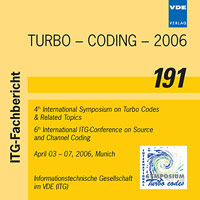Some Aspects of Interleave Division Multiple Access in Ad Hoc Networks
Conference: TURBO - CODING - 2006 - 4th International Symposium on Turbo Codes & Related Topics; 6th International ITG-Conference on Source and Channel Coding
04/03/2006 - 04/07/2006 at Munich, Germany
Proceedings: TURBO - CODING - 2006
Pages: 6Language: englishTyp: PDF
Personal VDE Members are entitled to a 10% discount on this title
Authors:
Kusume, Katsutoshi; Bauch, Gerhard (DoCoMo Eurolabs, Landsbergerstr. 312, 80687 Munich, Germany)
Abstract:
We consider some aspects of interleave division multiple access (IDMA) in ad hoc networks. IDMA is a multiple access technique which relies on an iterative multiuser detection and it has a close relation to CDMA. Traditionally, the medium access control protocol sees the physical layer as a collision model, while in literature the potential of multiuser detection techniques in ad hoc networks has been discussed. Higher efficiency can be achieved if a certain amount of interference is allowed due to the multiuser detection. In this paper we propose a simple complexity reduction technique for IDMA and a design of multiple user-distinct interleavers. The complexity reduction technique is aimed to support a variety of receivers with different capabilities of handling interference. It allows to reduce the complexity significantly while graceful performance degradation can be realized. The proposed multiple interleavers are designed so as to minimize memory requirements and signaling overhead by deriving multiple interleavers from one common interleaver.


